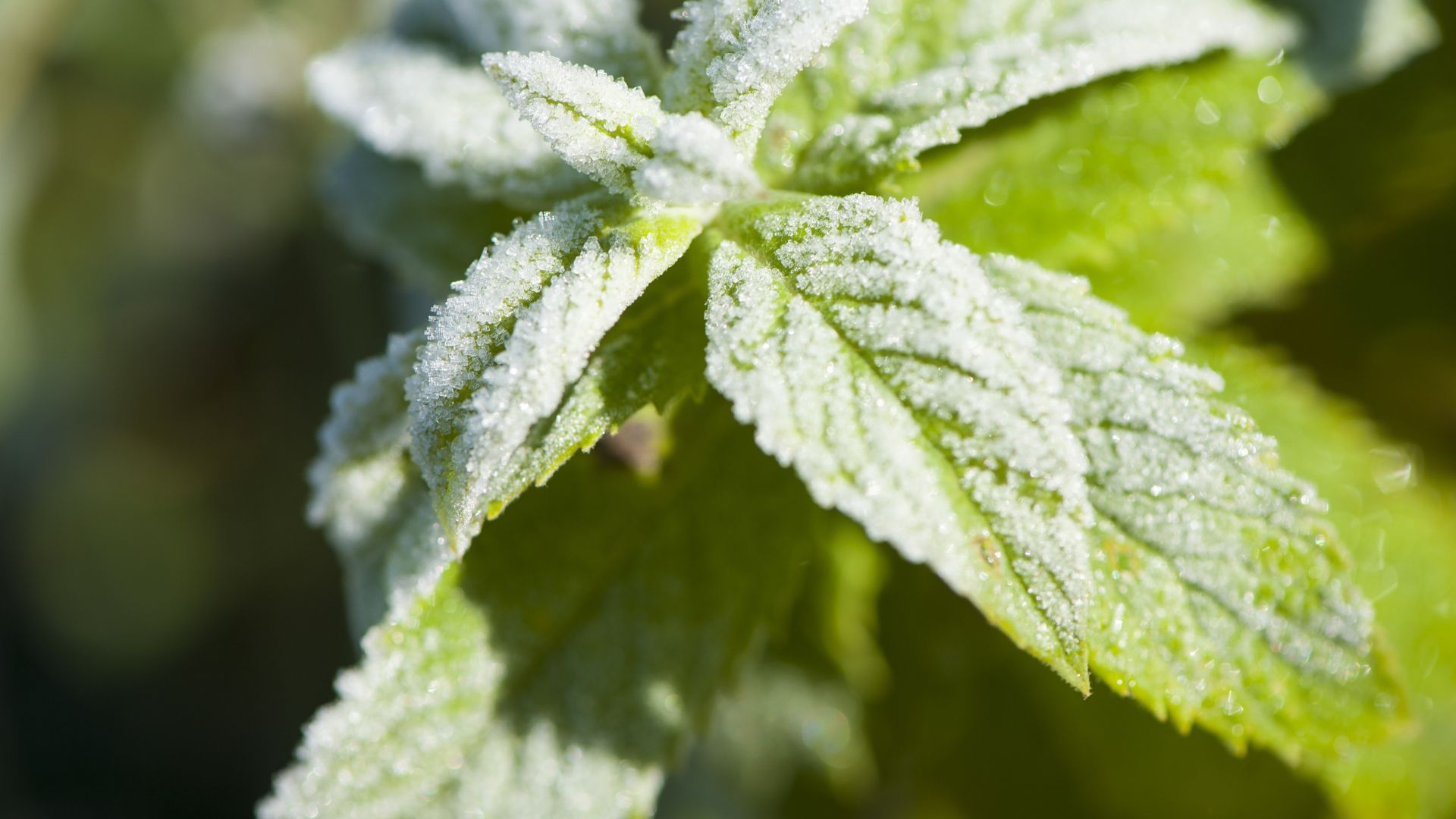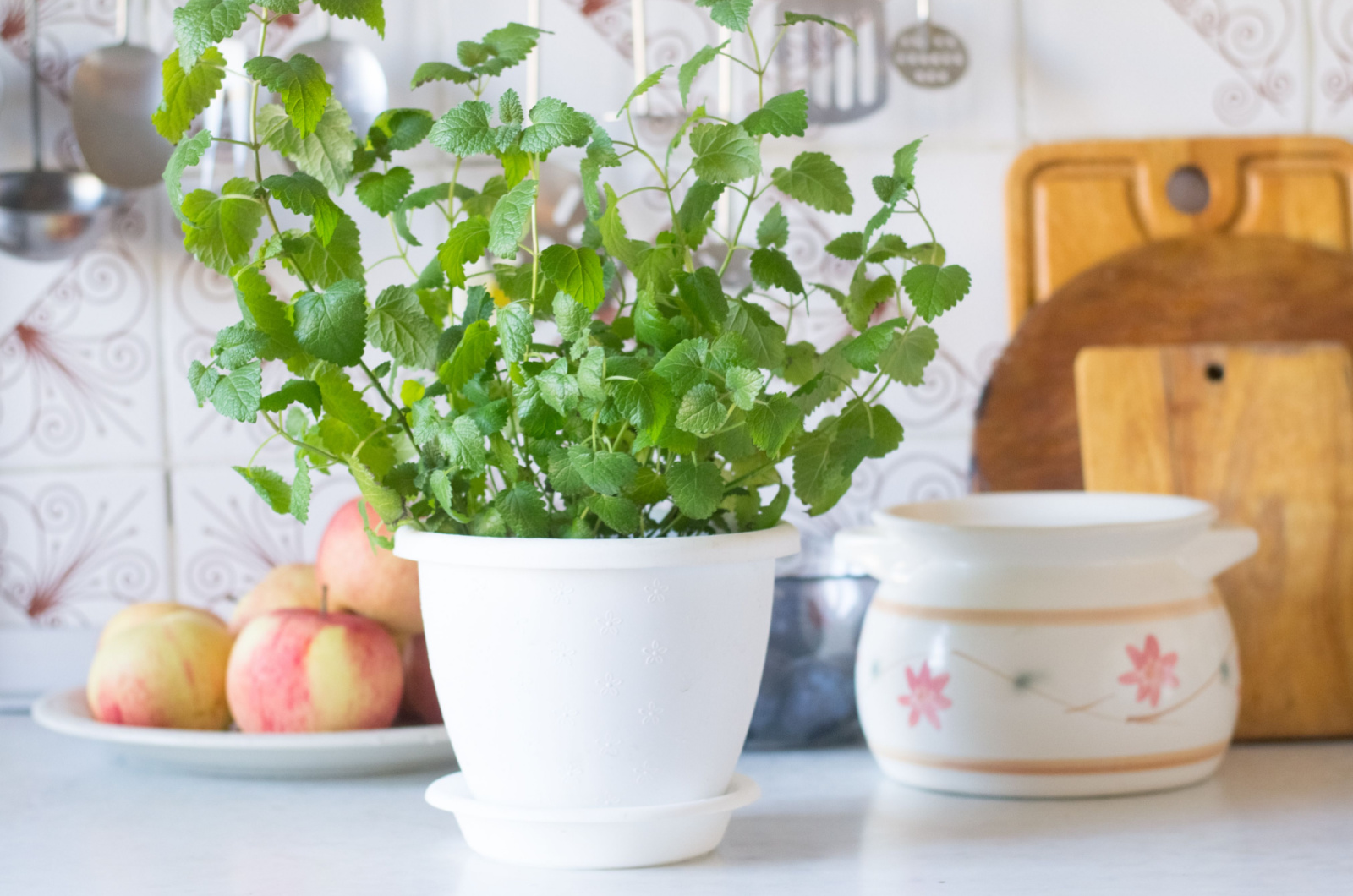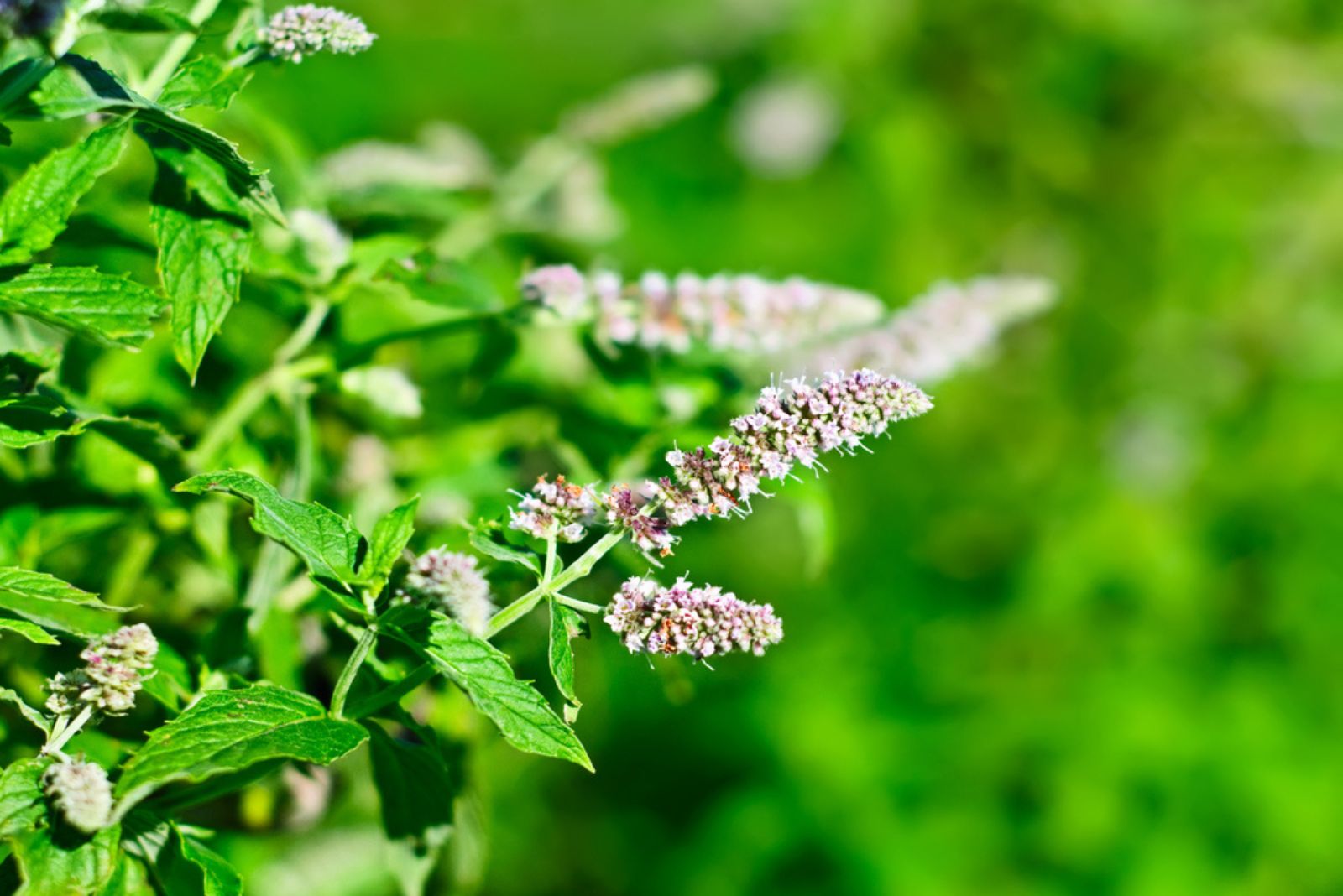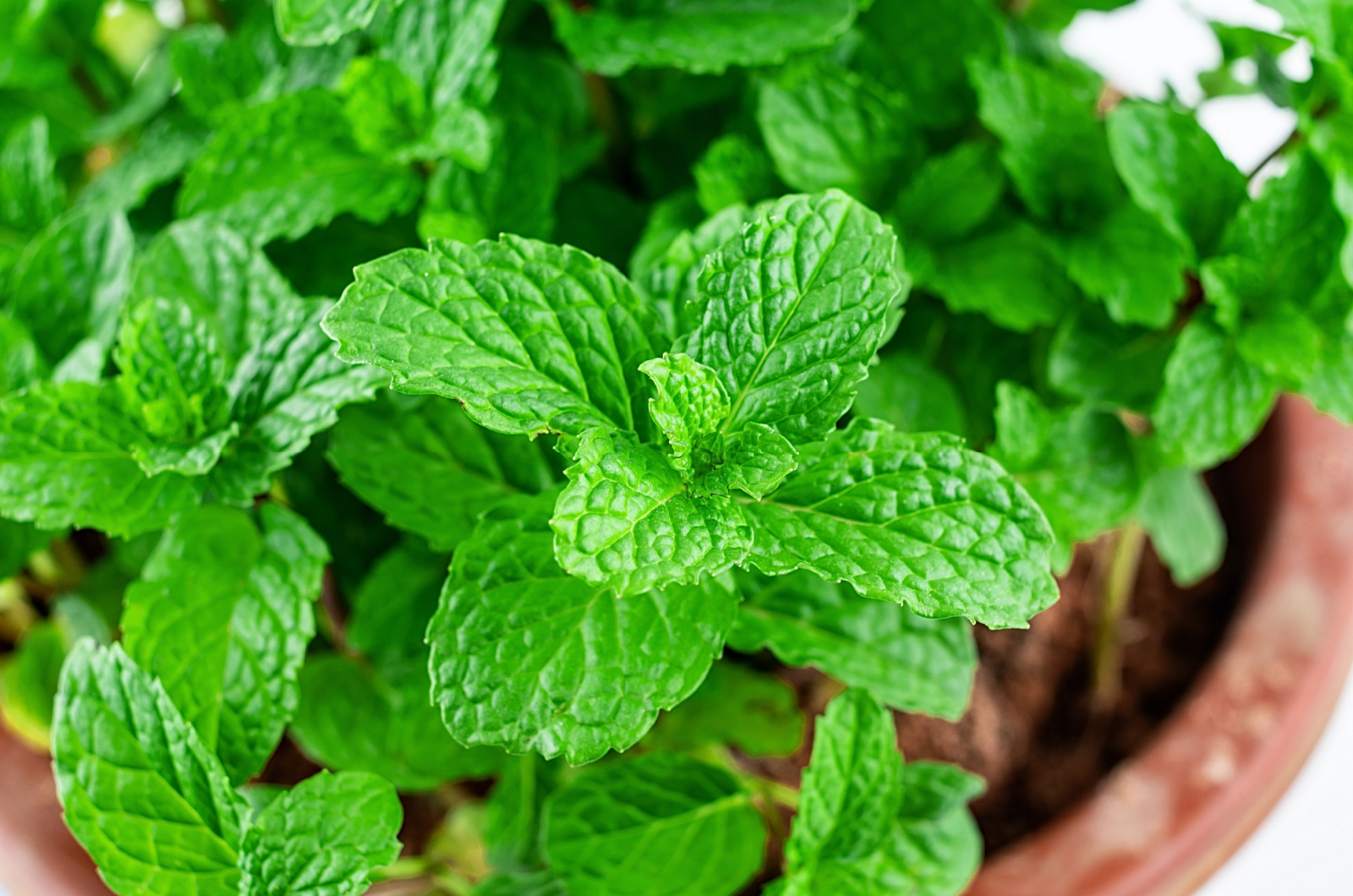Fragrant and captivating mint plants adorn gardens worldwide. Some use it in the kitchen and some grow it to fight insects, such as mosquitoes.
No matter the reason you grow this spectacular plant, the essential thing is to meet its requirements. This is especially important during the winter months because your mint may not survive if you don’t take all the necessary steps to protect it.
In this article, I’ll show you how to keep your mint plants healthy during winter.
Let’s get started!
Tasks To Complete Before The First Frost
There are numerous mint species, such as the spicata variety, which is used for culinary purposes, or suaveolens, which gardeners use to deal with pests.
These perennials are hardy in USDA zones 3 through 8 and they go dormant when winter arrives.
You should take the initial steps before the first frost because it can significantly damage the plant.
Start with harvesting your mint, i.e., remove all the edible leaves and store them properly. The next step is to remove all the stems on your mint using scissors, shears, or hedge trimmers.
Now it’s time to cover the plant; leaf mulch, twigs, or even a bedsheet can be used for this purpose.
If you live in an area with harsh frost or a lot of snow, you should take additional steps and protect your mint by wrapping the pots with fleece or bubble wrap. Alternatively, cover the pots with planks of wood.
Another way to protect your mint from cold is to move it to a sheltered, windless spot. You can put it in a cold frame or place it behind a wall.
Some gardeners even wrap their herb pots with old sheets and keep them in an unheated garage for overwintering.
If you keep your mint plant in a decorative container, such as those made of clay, it’s recommended to take them indoors during the winter months. Remember that these materials are susceptible to cracking.
Make sure the spot for your mint is warm and receives enough bright light. Mint is one of the healing plants and is great to have inside your household. And who knows, if you provide it with the right conditions, you may have some fresh leaves to harvest during the winter!
Make More Plants
One of the best things about mint plants is that they generate numerous stolons. Gardeners typically remove them if they grow their mint directly in the ground because the plant can spread aggressively.
But if your mint is potted, then you can use these stolons to get more plants for free! The sections you trim before the first frost can successfully root and develop into healthy plants.
All you need to do is cut these portions into 1-2 inch pieces and plant each piece individually in sprouting trays.
Put them in a sheltered location outdoors, such as a greenhouse, or on a sunny windowsill indoors.
You’ll most likely need to give each plant about a cup of water monthly during winter. The sprouts will emerge as the temperatures rise and you’ll have new seedlings for your spring garden!
Common Issues With Mint During Winter
It’s essential to inspect your mint regularly during the winter. Keep an eye on soil moisture levels because waterlogged soil can kill your mint.
If your region receives a lot of rain or there’s a lot of melted snow, you should put risers under your mint containers.
Remember that mint watering needs decrease significantly during winter.
Even though these herbs aren’t susceptible to diseases, you should watch out for mint rust. (1) The spores that cause this disease will ‘hide’ in the soil and roots of your plant to protect themselves from cold.
As soon as spring approaches, the leaves of your mint will display orange, black, or brown spots. There’s no cure for this disease, so if you notice any signs, the best solution is to dispose of the plants along with the soil.
Mint is definitely one of the best herbs out there and can be used in numerous ways. If you want them to survive through winter and generate new and healthy growth the next spring, all you need to do is follow our guidelines!
References
1. Mint Rust | NatureSpot. (n.d.).




